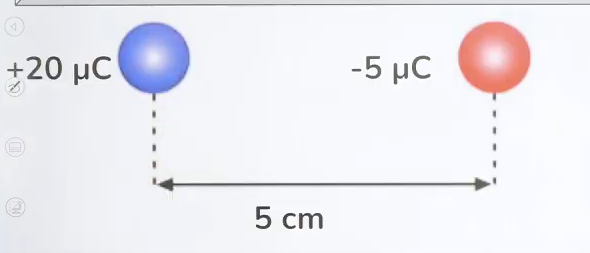The figure shown four situations in which charges as indicated (q>0) are fixed on an axis. How many situations is there a point to the left of the charges where an electron would be ib equilibrium?
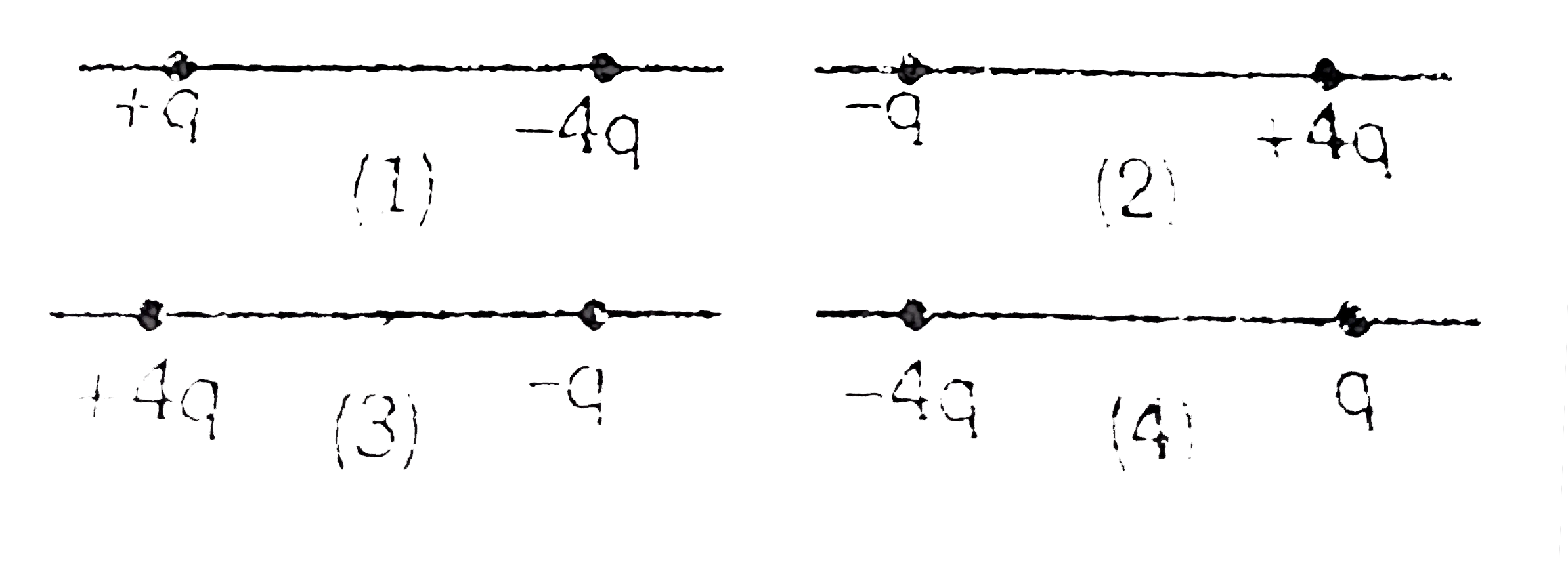
The correct Answer is:2
For (1)
Let the electron be held at a distance x from +q charge.
For equilibrium q(−e)4π∈0x2+(−e)(−4q)4π∈0(x+d)2=0
We can find value of x for which Fnet=0 which means that electron will be in equilibrium.
For (2):
For equilibrium (−e)(−q)4π∈0x2+(−e)4q4π∈0(x+d)2=0
We can find value of x for which Fnet=0 which means that electron will be in equilibrium. In case (3) and (4) the electron will not remain at rest, since it experiences a net non-zero force.
OR
Equilibrium is always found near the smaller charge

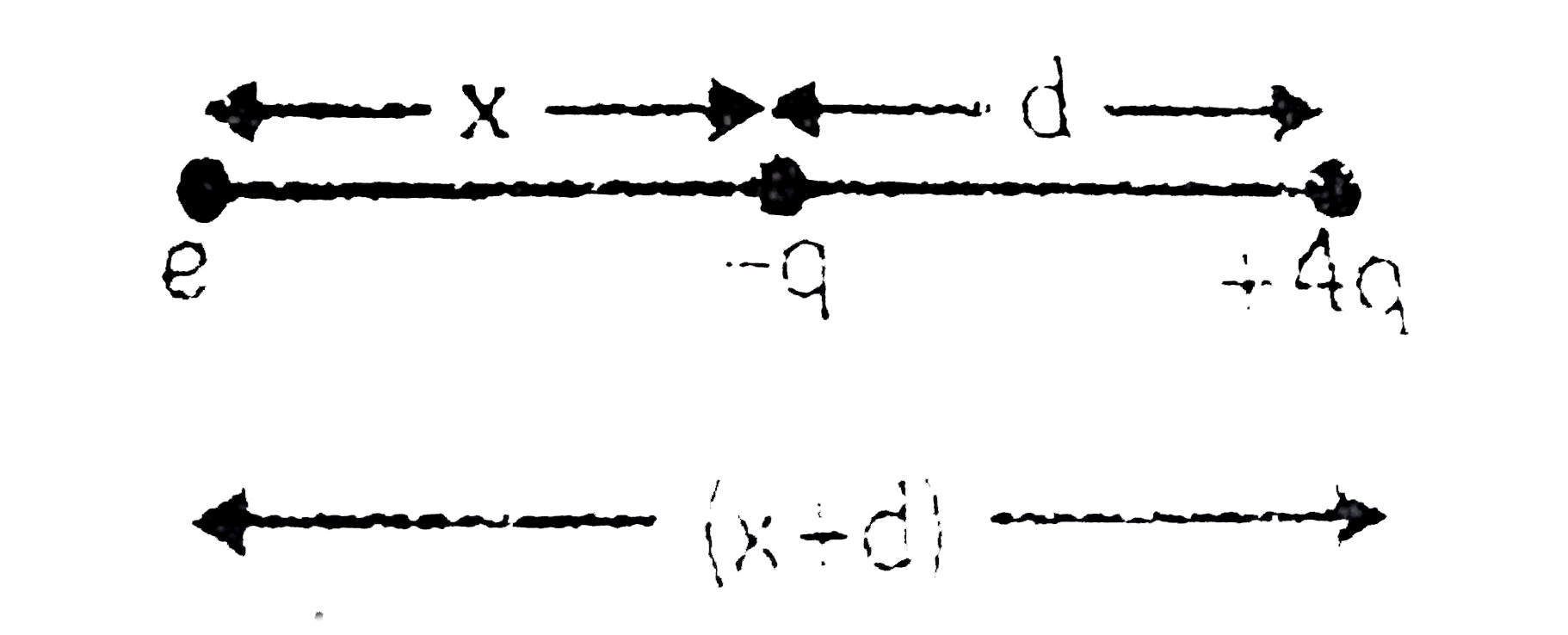
Topper's Solved these Questions
- MISCELLANEOUSBook:ALLENChapter:MISCELLANEOUSExercise:Part -II Example Some worked out Examples
Explore 1 Video
- MISCELLANEOUSBook:ALLENChapter:MISCELLANEOUSExercise:Exercise-01
Explore 87 Videos
- MISCELLANEOUSBook:ALLENChapter:MISCELLANEOUSExercise:SUBJECTIVE QUESTION
Explore 9 Videos
- KINEMATICS (MOTION ALONG A STRAIGHT LINE AND MOTION IN A PLANE)Book:ALLENChapter:KINEMATICS (MOTION ALONG A STRAIGHT LINE AND MOTION IN A PLANE)Exercise:BEGINNER S BOX-7
Explore 8 Videos
- PHYSICAL WORLD, UNITS AND DIMENSIONS & ERRORS IN MEASUREMENT Book:ALLENChapter:PHYSICAL WORLD, UNITS AND DIMENSIONS & ERRORS IN MEASUREMENT Exercise:EXERCISE-IV
Explore 8 Videos
Similar Questions
Knowledge Check
Following figures show four situations in which positive and negative charges move horizontaly through a region and give the rate at which each charge moves. Rank the situations according to the effective current through the region greatest first.
 Ai=ii=iii=ivBi>ii>iii>ivCi=ii=iii>ivDi=ii=iii<iv
Ai=ii=iii=ivBi>ii>iii>ivCi=ii=iii>ivDi=ii=iii<ivGauss's theorem is true for any point charge situated any where
Aoutside the surfaceBinside the surfaceCon the surfaceDnone of theseTwo equal negative charges are fixed at points and on y-axis. A positive charge Q is released from rest at the point on the x-axis. The charge Q will:
Aexecute simple harmonic motion about the originBmove to the origin and remain at restCmove to infinityDsame as at point 25 cm aways form the surface
A negative point charge −2q and a positive charge q are fixed ar a distance l apart. Where should a postive test charge Q be placed on the line connecting the charge for it to be in equlibrium ? What is the nature of the equilibrium with respect to longitudinal motions ?
View SolutionFigure shows two charge particles on an axis. The charges are free to move. At one point, however, a third charged particle can be placed such that all three particles are in equilibrium.
(a) Is that point to the left of the first two particles to their rightm or between them?
(b) should the third paricle be positively or negatively charged?
(c ) Is the equilibrium stable or unstable?

View SolutionTwo fixed point charges +4e and +e units are separated by a distance a. Where should a third point charge be placed for it to be in equilibrium?
View SolutionA figure below shows the forces that three charged particles exert on each other. Which of the four situations shown can be correct .

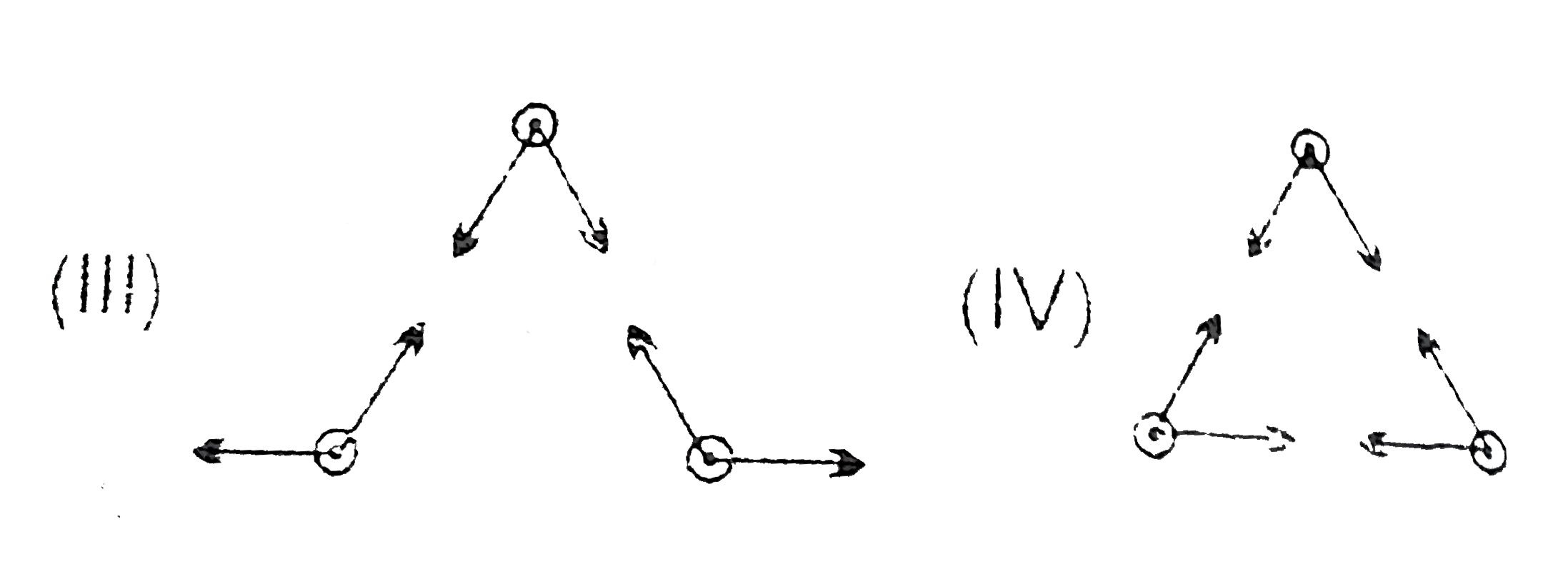
View SolutionThe figure below depict two situations in which two infinitely long static line charges of constant positive line charge density λ are kept parallel to each other. In their resulting electric field, point charges q and −q are kept in equilibrium between them. The point charges are confined to move in the x direction only. If they are given a small displacement about their equilibrium positions, then the correct statement(s) is(are)
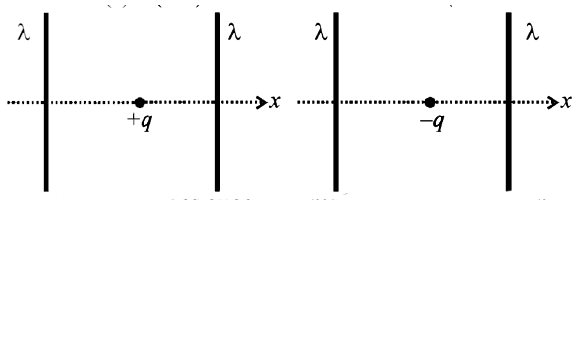
View Solution


